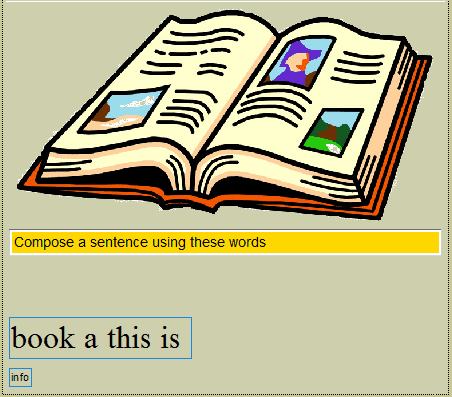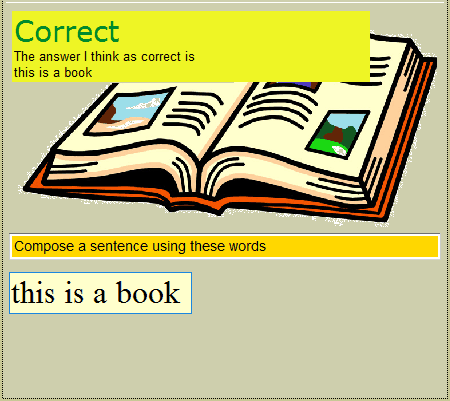
|
A. Word Puzzle
The adjacent picture shows a question, where a few words must be placed
by the pupil appropriately to form a sentence.
-
There can be many combinations and can be formed more than one sentences
-
It is OK for the pupil to compose just one of them
-
It is responsibility of the teacher to predict all the possible
sentences, in order not to expose himself in the eyes of the pupil
-
The teacher can also accept sentences with fewer words. That is sentences not using all the proposed words
-
The answer of the pupil will be graded as either completely correct
(if he form any of the teacher's sentences) or as completely wrong.
There is no intermediate state.
|

|
B. Word Puzzle
-
By successively clicking on the words, the pupil moves them to the upper side, trying to form a sentence.
-
When feels ready, he presses the Submit button
|

|
C. Word Puzzle
The results after pressing the Submit button.
As you may have guessed, there is a slight affinity between Word Puzzle and Put In Order
questions.
But, be careful! The Put In Order category is mainly for historical phrases,
that have been said with a standard fixed way.
In contrary the Word Puzzle category is for everyday phrases that can be said in many different ways.
It is more suitable for learning foreign languages.
Comparison
|
Word Puzzle |
In Order |
| priority |
The words do not have any priority |
The words do have priority |
| correctness |
The answer is evaluated as correct, if exactly matches to one of the proposed sentences |
The answer is evaluated as correct, if the priorities (of the words) are not descending |
| organic multimedia |
No! Only words |
Yes! Words can be mixed with images |
| decorative multimedia |
Yes (eg. the image of the book at the left) |
Yes |
|



